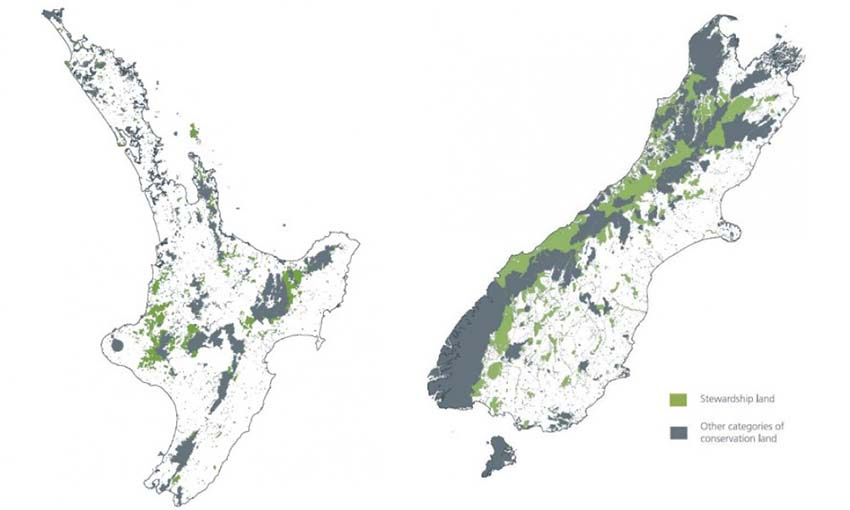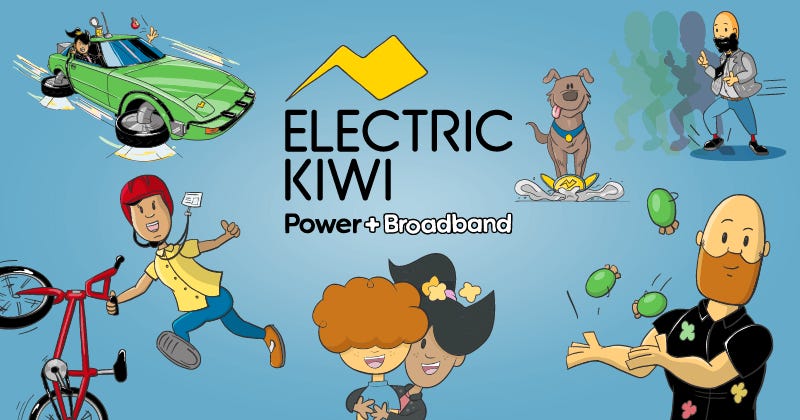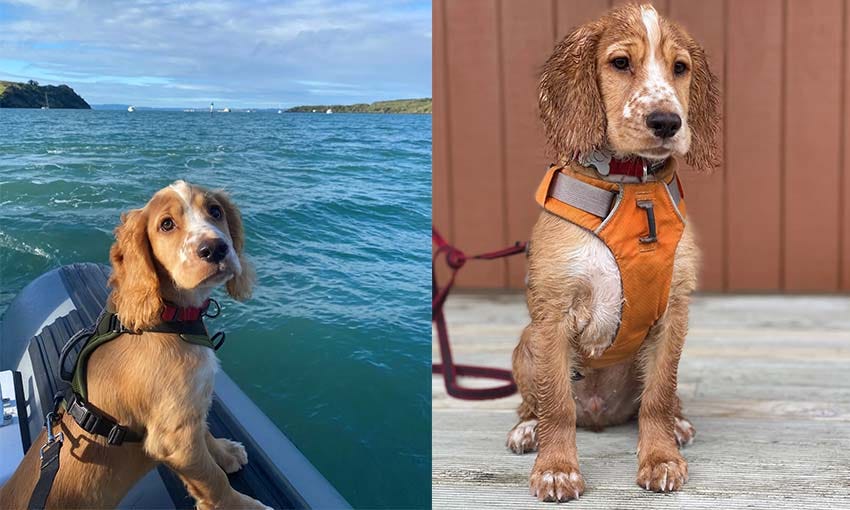The fate of West Coast wilderness: Up for debate?
Huge tracts of ‘stewardship’ land on the South Island’s West Coast are finally being reclassified after years of inadequate protection. It’s complicated, but it’s also a moment for hope.
Kia ora! Welcome to Future Proof, brought to you by Electric Kiwi.
This week I want to talk about a story that hasn’t received much attention, despite having a huge impact on one of our greatest shared legacies: the conservation estate. Around one-third of conservation land (9% of all of Aotearoa’s land) has been sitting in conservation limbo for decades, under a category called “stewardship land”, which doesn’t offer much in the way of legal protection. The government is finally deciding what to do with it, starting with 500-odd lots on the West Coast. Independent and mana whenua panels are assessing each bit of land for its conservation and Māori cultural values, and then suggesting how it should be protected.
Image: Forest & Bird
It’s been a long road to get to this point. In New Zealand Geographic, Nic Low traces the legal history that underpins the current assessment process, and explores one of the central stewardship land conundrums: how can mana whenua (in this case, Ngāi Tahu) exert rangatiratanga over their ancestral lands when large tracts are managed by the Department of Conservation (DOC)? The panels released their recommendations back in late May, with the headlines honing in on the proposed expansion of Paparoa National Park. But more recently, Newsroom’s David Williams has asked why so much of the 644,000 hectares at stake is allocated only “weak” protection.
One of the land parcels under the most scrutiny is the Denniston Plateau, in the Mount Rochfort conservation area. This remote and rugged escarpment is the site of a mothballed coal mine, but it’s also home to rare and threatened species and ecosystems, including carnivorous land snails, newly discovered moth species, and colourful native geckos. As it stands, the area is earmarked to become a conservation park – a category that would still allow mining. As a result, environmental NGOs are calling for the area to be given stronger protection.
It’s a classic West Coast clash of economics vs the environment. But I reckon it’s also a moment to be hopeful for our conservation future. Earlier this week, I had a yarn with lifelong conservationist Mike Lee. He told me how angry he and others felt about the bare grassy landscapes that had been stripped of forest, and the efforts over 40 years to replant hillsides and valleys with native bush. He spoke about the shared sense of belonging they felt with their restored nature: our native forest and our native birds. It’s not often you get an opportunity to help decide the fate of some of our iconic landscapes, protect our shared climate and biodiversity, and shape a conservation future that “integrates landscape, people and cultures”. DOC are calling for submissions on the panels' proposals for the 504 West Coast stewardship blocks. There's just under a week to chuck in your two cents.
Stay warm,
Ellen.
Electric Kiwi is an independent power company working to make things fairer for all New Zealanders – and now they offer broadband too.
Sign up with Electric Kiwi for your power and you'll get guaranteed savings and an hour of free off-peak power every day. Their broadband won't lock you into any fixed-term contracts, you pay by the day (it’s the fairer way) and there’s no pesky notice periods either, just fast speeds and low prices.
Check out Electric Kiwi's electricity and broadband offers today.
50 million?! How many Archey’s frogs are really out there
An “eyebrow-raising” research report published by mining company OceanaGold claims there may be as many as 54 million Archey’s frogs – not 5,000-20,000, as per Department of Conservation population estimates. The teeny frogs, which are critically endangered, live in the forests of the Coromandel, where OceanaGold is hoping to open up a gold mine. Newsroom’s Jonathan Milne covered the bizarre news last week, but the author of the frog report, ecologist Brian Lloyd, was not available to be interviewed for the story, according to OceanaGold. In a perplexing twist, Stuff reporter Sharnae Hope did manage to get a quote out of Lloyd: “Is that what we said, more than 50 million? I wouldn’t support that. All I can comment on is what I said in my report.” While Lloyd seems confused about the findings of his own report, other frog experts say the 54 million estimate is “ludicrous”. I’m hoping to get out to the Coromandel to experience the bush teeming with millions of frogs, and would love to hear from any locals about how they’re coping with the amphibian plague.
We don’t really know how much food we’re wasting
The chief science adviser’s office is investigating food waste this year, and has just released its first report on this topic. Turns out, we waste a lot of food, but we don’t really know how much. We do know that nearly 14,000 tonnes of unsold food from the big three supermarkets heads to landfill each year, in addition to more than 23,000 tonnes from cafes and restaurants. A 2018 study found that New Zealand households throw out 164kg of food on average each year. But there are patchy gaps in this data, and if we want to tackle the food waste problem (and prevent a lot of methane emissions from rotting food in landfill) we need to understand the scale of what we’re dealing with. I’m looking forward to future report releases, which should cover all the juicy solutions stuff. But in the meantime, I was heartened to see some tasty treats made using rescued food, like this BurgerFuel burger and a new Duck Island ice cream flavour. Yum!
Tackling the ocean plastic problem
Around 10% of all plastic in the ocean comes from fishing vessels. But luckily, we already have international laws to deal with this source of pollution. We just have to actually enforce those laws, says Karen Scott, a law professor at the University of Canterbury. Meanwhile, what about avoiding plastic fishing gear in the first place? Nicola MacDonald speaks to the MongaBay Newscast about Kōhanga Kūtai, a project interweaving mātauranga Māori and western science to find natural fibre alternatives to the plastic ropes often used in mussel farming.
Finding joy in the face of the climate crisis
Can laughter help us get climate messaging across? And how would the climate crisis be different if we approached the world with a childlike sense of play and wonder? The July issue of Fix, from US-based sustainability outfit Grist, is all about joy, and I am HERE for it.
“Joy is an indispensable force. It can strengthen our resolve, help us uncover creative solutions, and bolster our resilience. It’s a statement to ourselves and the world that we are still here, undefeated. In this issue, we look at why joy is so crucial in this moment, how to make space for it, and the surprising ways people are channelling it to do better climate and justice work.”
Like what you’ve read today? Share Future Proof with friends, family and colleagues.
Five quick questions with TikTok creator Samuel Purdie
Speaking of joy, I’ve been surprised to find some joyful content on TikTok. Scrolling through my For You Page while stuck on the couch with Covid took me from the foggy forests and coastlines of the Pacific Northwest in the US to drone footage of nurse sharks cruising off Sydney’s Bondi Beach. Closer to home, we have a few emerging content creators bringing Aotearoa’s natural beauty to your smartphone screen. Samuel Purdie is a reptile scientist and wildlife photographer based in Dunedin. He shares his passion for wildlife with more than 12,000 followers on TikTok as @samanimalman, introducing audiences to lesser-known critters and answering the important questions – like are whitetail spiders actually venomous?
What made you decide to start sharing animal videos on TikTok?
Some friends of mine suggested it, and I thought it was a valuable opportunity to spread awareness about our wonderful wildlife.
What’s been the best or most memorable reaction to one of your videos?
I mentioned the possibility that the extinct birds huia might have practised cooperative feeding – with the male and female having quite different beaks, they could have exploited different food sources. Someone responded saying that: “In Taranaki, Ngā Huia is a proverb that speaks about teamwork. One would dig, the other would extract, and they both fed their offspring.” I thought that was beautiful!
Do you have a favourite critter or wildlife encounter?
I don’t like to pick favourites! But currently, Fiordland skinks (Oligosoma acrinasum) are one of my favourites. They are large, active and highly social. They occupy the violent southern coastline of Fiordland and are known to dive into the ocean and disperse between islets.
Who is your environmental hero?
I have many! Wildlife photographer Chien Lee, reptile biologist Alejandro Arteaga, and Steve Irwin are just a few. I have many New Zealand environmental heroes too – too many to name.
What’s one tip or strategy you have for living more sustainably?
Reduce meat and dairy consumption – or eliminate it completely.
All week on The Spinoff, we are examining our relationship with menstruation in Aotearoa. And, just like real periods, the content will be both heavy and light and will probably make you laugh and cry all at once. Read more Bleed Week content here.
Finally, a dose of cuteness for your Wednesday afternoon: Blaze is the latest clever canine to join the ranks of New Zealand’s conservation detection dogs. He is in training to detect rodents, and will help keep pest-free islands across Aotearoa safe from rats and mice. I got to meet some of our conservation dogs a few years ago, and I can assure you they are all very good boys and girls. Best of luck for your training, Blaze (and Adeline)!
Image: Department of Conservation.
Got some feedback about Future Proof or topics you’d like covered? Get in touch with me at futureproof@thespinoff.co.nz
















Second issue and I am loving this newsletter so far! Informative, actionable and fun. Ngā mihi, keep up the good work.
Great work, Ellen! What a good newsletter this is.